#Automated market maker defi
Explore tagged Tumblr posts
Text
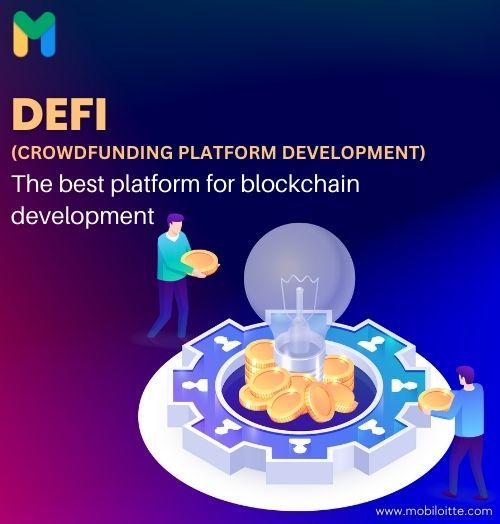
Decentralized Finance Development Services Mobiloitte offers Defi development services that can help you create a custom Defi platform that meets your specific needs and requirements.
#goose defi#DeFi Lending & Borrowing Software#Defi Lending and Borrowing Platform Development Company#defi lending and borrowing platform development#amm defi platform#amm defi#DeFi Lending & Borrowing Platform#defi exchange development#Automated market maker defi#Decentralized Finance on Binance Smart Chain#defi staking platform development#defi token development company#defi token development#defi development#what is defi crowdfunding#defi development services#defi wallet development solutions#DeFi Crowdfunding Platform#DeFi Crowdfunding Platform Development#benefits of defi crowdfunding#defi development company#defi software#defi consulting#decentralized financial assistance#types of crowdfunding
0 notes
Text
Orca: Can Solana's DEX Become the Uniswap of the Next Crypto Cycle?
New Post has been published on https://www.ultragamerz.com/orca-can-solanas-dex-become-the-uniswap-of-the-next-crypto-cycle/
Orca: Can Solana's DEX Become the Uniswap of the Next Crypto Cycle?
Orca: Can Solana’s DEX Become the Uniswap of the Next Crypto Cycle?
The decentralized exchange (DEX) landscape continues to evolve, with established players like Uniswap on Ethereum facing competition from innovative challengers on emerging blockchains. Orca, a leading DEX built on Solana, presents a compelling case for becoming the “Uniswap” of the next crypto cycle, capitalizing on several key factors.
Uniswap’s Reign and Potential Challenges:
Uniswap revolutionized DeFi by pioneering the automated market maker (AMM) model, fostering a user-friendly platform for token swaps. However, Ethereum’s scalability issues have led to high gas fees, hindering user experience and potentially limiting its future growth.
Solana’s Rise as a Contender:
Solana, known for its blazing-fast transaction speeds and low fees, has emerged as a viable alternative to Ethereum. This has attracted developers and users seeking a smoother and more affordable DeFi experience.
Orca: Inheriting the DEX Crown?
Orca, built on Solana, positions itself to capitalize on these trends. Here’s why Orca could be the next Uniswap:
Low Fees & High Throughput: Leveraging Solana’s infrastructure, Orca offers near-instantaneous transactions with minimal fees, attracting users frustrated with Ethereum’s limitations.
Uniswap-inspired Interface: Orca’s user interface is familiar and user-friendly for those already accustomed to Uniswap, facilitating a smooth transition.
Concentrated Liquidity: Similar to Uniswap V3, Orca’s “Whirlpool” feature allows liquidity providers to deposit tokens within specific price ranges, potentially earning higher returns.
Growing Solana Ecosystem: As the Solana ecosystem thrives, Orca stands to benefit from increased adoption of DeFi applications built on Solana.
Low Market Cap: Compared to Uniswap’s massive market cap, Orca’s remains significantly lower. This presents a potential for substantial growth if the project gains wider adoption.
Potential Price Explosion:
Uniswap’s phenomenal rise, reaching a peak price over 300 times its initial value, serves as a potential benchmark for Orca’s future. If Orca captures a dominant share of the Solana DeFi market, its token price could conceivably reach similar heights. With Orca’s current market cap significantly lower than Uniswap’s at its peak, a 300x increase could propel Orca’s price to well over $120 per token during the next crypto bull run.
Is Orca a Guaranteed Success?
While Orca holds immense potential, the crypto space is inherently unpredictable. Competition from other DEXes on Solana and potential roadblocks for the Solana blockchain itself could pose challenges.
Looking Ahead:
The next crypto cycle remains shrouded in uncertainty. However, Orca’s strategic positioning on Solana, combined with its user-friendly interface and low-fee environment, presents a compelling chance to become the leading DEX on a burgeoning blockchain. As the DeFi landscape evolves, Orca’s performance bears close watching to see if it can indeed become the “Uniswap” of the next era.
Disclaimer: This information is for educational purposes only and should not be considered financial advice. Please consult with a qualified financial advisor before making any investment decisions.
Keywords:
Orca, DEX, Uniswap, Solana, Ethereum, DeFi, decentralized exchange, automated market maker (AMM), transaction fees, user-friendly interface, concentrated liquidity, scalability, blockchain, DeFi application, market cap, price prediction, Uniswap price history, crypto bull run, investment opportunity, Solana ecosystem, future of DeFi, competition, crypto market, potential, uncertainty, financial advice, disclaimer
#automated market maker (AMM)#blockchain#competition#concentrated liquidity#Crypto Bull Run#crypto market#decentralized exchange#DeFi#DeFi application#DEX#disclaimer#ethereum#financial advice#future of DeFi#investment opportunity#market cap#Orca#potential#price prediction#scalability#solana#Solana ecosystem#transaction fees#uncertainty#Uniswap#Uniswap price history#user-friendly interface#cryptocurrency#Gaming News#Technology
0 notes
Text
#what is decentralized finance#DeFi in Web3#Decentralized Finance Web3#decentralized exchange#Applications of DeFi#NFT in DeFi#automated market makers#DeFi Ecosystem#DeFi in Traditional Finance#Digital Assets in DeFi
0 notes
Text
Explore BitNest Loop DeFi: Building the Financial Ecosystem of the Future
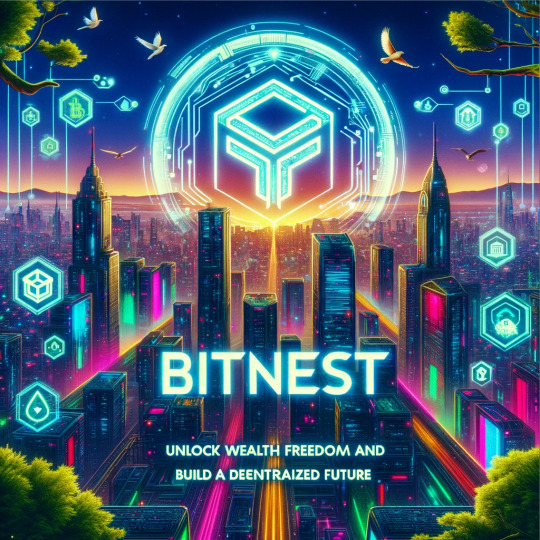
Today, with the rapid development of financial technology, decentralized finance (DeFi) has become a force that cannot be ignored. As a rising star in the industry, BitNest Loop DeFi is redefining our understanding of financial services with its unique innovation and reliable technology solutions. This article will delve into the core functions of BitNest Loop DeFi and the diverse financial solutions it brings to users.
What is BitNest Loop DeFi? BitNest Loop DeFi is a decentralized financial platform based on blockchain technology, dedicated to providing a series of financial services, including lending, liquidity mining, trading, etc. The platform uses smart contract technology to ensure the transparency, security and efficiency of all transactions.
Core functions Decentralized Lending: BitNest Loop DeFi allows users to mortgage crypto assets to borrow other assets, providing flexible lending terms and competitive interest rates. Users can quickly obtain the funds they need without the need for traditional credit evaluations. Liquidity Mining: Users can deposit their assets into BitNest Loop’s liquidity pool to receive transaction fee sharing and platform token rewards. This not only increases the liquidity of the asset, but also provides users with opportunities for passive income. Automated Market Maker (AMM): Using algorithms to provide liquidity for transactions, users can exchange assets at any time without waiting for buyers or sellers. Decentralized governance: Users holding platform tokens can participate in the governance of the platform and vote on major updates and changes, truly achieving community-driven project development. Security and transparency Security is the most important aspect of BitNest Loop DeFi. By leveraging the Ethereum blockchain, the platform ensures that all transaction records are immutable and every transaction is publicly viewable on the chain. Additionally, the smart contract code is rigorously audited to prevent any form of security breach.
future outlook BitNest Loop DeFi is more than just a financial platform, it is also an innovative ecosystem that provides developers and users with a scalable, secure and efficient decentralized financial service platform. As blockchain technology continues to mature, BitNest Loop DeFi will continue to lead the innovation of decentralized finance, provide users with more financial tools and services, and promote the development of the entire industry.
On the road to exploring the future of finance, BitNest Loop DeFi is using technology to break tradition and provide more fair, transparent and convenient financial services to users around the world. Whether you are an investor or an everyday user, BitNest Loop DeFi deserves your attention and participation. Join us to explore the infinite possibilities of blockchain finance.
Contact Telegram; https://t.me/Rosa02b https://t.me/Rosa03c https://t.me/rosa04d
#BitNest#BitNestLoop#BitNestPureContract#BitNestis the best project in the currency circle#BitNestSecurely#BitNestAutonomously#BitNestDecentralizedly#BitNestCryptographically
4 notes
·
View notes
Text
Explore BitNest Loop DeFi: Building the Financial Ecosystem of the Future
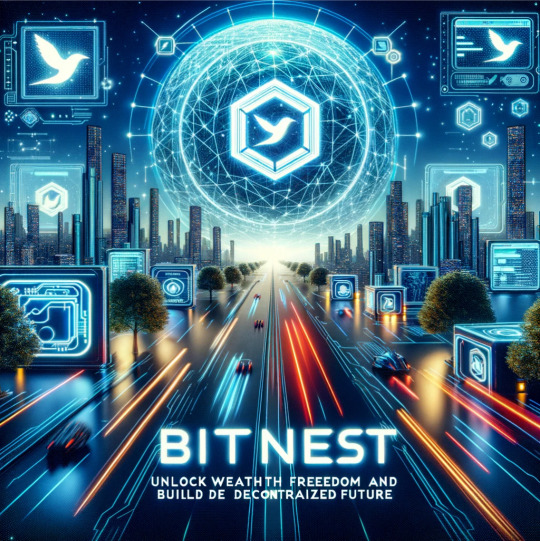
Today, with the rapid development of financial technology, decentralized finance (DeFi) has become a force that cannot be ignored. As a rising star in the industry, BitNest Loop DeFi is redefining our understanding of financial services with its unique innovation and reliable technology solutions. This article will delve into the core functions of BitNest Loop DeFi and the diverse financial solutions it brings to users.
What is BitNest Loop DeFi? BitNest Loop DeFi is a decentralized financial platform based on blockchain technology, dedicated to providing a series of financial services, including lending, liquidity mining, trading, etc. The platform uses smart contract technology to ensure the transparency, security and efficiency of all transactions.
Core functions Decentralized Lending: BitNest Loop DeFi allows users to mortgage crypto assets to borrow other assets, providing flexible lending terms and competitive interest rates. Users can quickly obtain the funds they need without the need for traditional credit evaluations. Liquidity Mining: Users can deposit their assets into BitNest Loop’s liquidity pool to receive transaction fee sharing and platform token rewards. This not only increases the liquidity of the asset, but also provides users with opportunities for passive income. Automated Market Maker (AMM): Using algorithms to provide liquidity for transactions, users can exchange assets at any time without waiting for buyers or sellers. Decentralized governance: Users holding platform tokens can participate in the governance of the platform and vote on major updates and changes, truly achieving community-driven project development. Security and transparency Security is the most important aspect of BitNest Loop DeFi. By leveraging the Ethereum blockchain, the platform ensures that all transaction records are immutable and every transaction is publicly viewable on the chain. Additionally, the smart contract code is rigorously audited to prevent any form of security breach.
future outlook BitNest Loop DeFi is more than just a financial platform, it is also an innovative ecosystem that provides developers and users with a scalable, secure and efficient decentralized financial service platform. As blockchain technology continues to mature, BitNest Loop DeFi will continue to lead the innovation of decentralized finance, provide users with more financial tools and services, and promote the development of the entire industry.
On the road to exploring the future of finance, BitNest Loop DeFi is using technology to break tradition and provide more fair, transparent and convenient financial services to users around the world. Whether you are an investor or an everyday user, BitNest Loop DeFi deserves your attention and participation. Join us to explore the infinite possibilities of blockchain finance.
Contact Telegram; https://t.me/Rosa02b https://t.me/Rosa03c https://t.me/rosa04d
#BitNest#BitNestLoop#BitNestPureContract#BitNestis the best project in the currency circle#BitNestSecurely#BitNestAutonomously#BitNestDecentralizedly#BitNestCryptographically
5 notes
·
View notes
Text
Explore BitNest Loop DeFi: Building the Financial Ecosystem of the Future
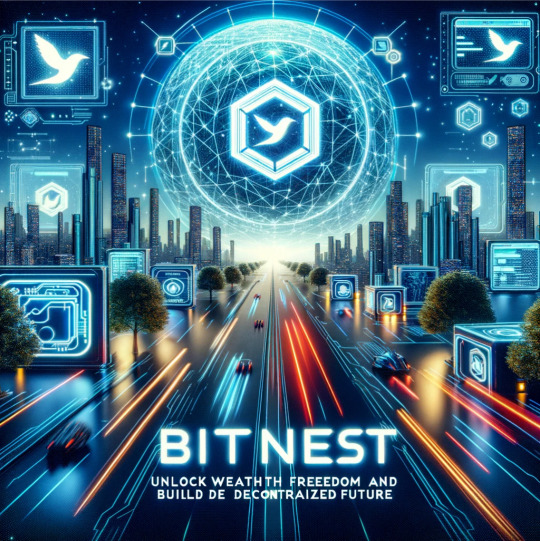
Today, with the rapid development of financial technology, decentralized finance (DeFi) has become a force that cannot be ignored. As a rising star in the industry, BitNest Loop DeFi is redefining our understanding of financial services with its unique innovation and reliable technology solutions. This article will delve into the core functions of BitNest Loop DeFi and the diverse financial solutions it brings to users.
What is BitNest Loop DeFi? BitNest Loop DeFi is a decentralized financial platform based on blockchain technology, dedicated to providing a series of financial services, including lending, liquidity mining, trading, etc. The platform uses smart contract technology to ensure the transparency, security and efficiency of all transactions.
Core functions Decentralized Lending: BitNest Loop DeFi allows users to mortgage crypto assets to borrow other assets, providing flexible lending terms and competitive interest rates. Users can quickly obtain the funds they need without the need for traditional credit evaluations. Liquidity Mining: Users can deposit their assets into BitNest Loop’s liquidity pool to receive transaction fee sharing and platform token rewards. This not only increases the liquidity of the asset, but also provides users with opportunities for passive income. Automated Market Maker (AMM): Using algorithms to provide liquidity for transactions, users can exchange assets at any time without waiting for buyers or sellers. Decentralized governance: Users holding platform tokens can participate in the governance of the platform and vote on major updates and changes, truly achieving community-driven project development. Security and transparency Security is the most important aspect of BitNest Loop DeFi. By leveraging the Ethereum blockchain, the platform ensures that all transaction records are immutable and every transaction is publicly viewable on the chain. Additionally, the smart contract code is rigorously audited to prevent any form of security breach.
future outlook BitNest Loop DeFi is more than just a financial platform, it is also an innovative ecosystem that provides developers and users with a scalable, secure and efficient decentralized financial service platform. As blockchain technology continues to mature, BitNest Loop DeFi will continue to lead the innovation of decentralized finance, provide users with more financial tools and services, and promote the development of the entire industry.
On the road to exploring the future of finance, BitNest Loop DeFi is using technology to break tradition and provide more fair, transparent and convenient financial services to users around the world. Whether you are an investor or an everyday user, BitNest Loop DeFi deserves your attention and participation. Join us to explore the infinite possibilities of blockchain finance.
Contact Telegram; https://t.me/Rosa02b https://t.me/Rosa03c https://t.me/rosa04d
#BitNest#BitNestLoop#BitNestPureContract#BitNestis the best project in the currency circle#BitNestSecurely#BitNestAutonomously#BitNestDecentralizedly#BitNestCryptographically
6 notes
·
View notes
Text
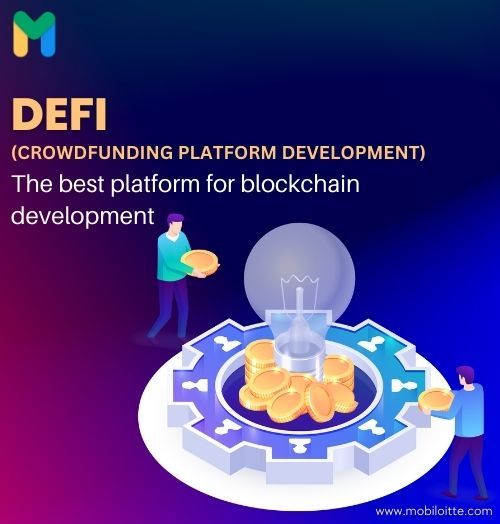
Decentralized Finance Development Services
Defi is a decentralized finance platform that allows users to lend, borrow, and trade cryptocurrency without the need for a third-party intermediary. Mobiloitte offers Defi development services that can help you create a custom Defi platform that meets your specific needs and requirements. With our expert team of developers, we can help you launch a Defi platform that is secure, scalable, and easy to use.
#goose defi#DeFi Lending & Borrowing Software#Defi Lending and Borrowing Platform Development Company#defi lending and borrowing platform development#amm defi platform#amm defi#DeFi Lending & Borrowing Platform#defi exchange development#Automated market maker defi#Decentralized Finance on Binance Smart Chain#defi staking platform development#defi token development company#defi token development#defi development#what is defi crowdfunding#defi development services#defi wallet development solutions#DeFi Crowdfunding Platform#DeFi Crowdfunding Platform Development#benefits of defi crowdfunding#defi development company#defi software#defi consulting#decentralized financial assistance#types of crowdfunding
0 notes
Text
Oracle can accurately capture the value of various data assets and monetize its big data AI investments
In the context of the gradual rise of the global new generation of information technology wave, blockchain plays an important role in the new round of scientific and technological revolution and industrial transformation.
With the widespread implementation of blockchain applications, blockchain technology such as smart contracts, big data, AI, etc. are becoming more mature, and the integration of blockchain technology with finance, supply chain, medical care, law, people's livelihood, education, copyright, public welfare, etc. is also closer, and the blockchain industry is in a stage of vigorous development.

With the continuous construction and improvement of digital infrastructure such as Web 3.0, big data, artificial intelligence, and industrial Internet, more new scenarios and new applications have emerged. With the frequent benefits of the DeFi industry, the oracle project has also caught this express train and entered the rapid ascent channel.
Oracle can accurately capture the value of various data assets and monetize its big data AI investments
Thanks to the world's leading cross-chain oracle technology, Oracle can lock in the buying and selling points of assets in global decentralized exchanges in a very short time, as well as the value difference between decentralized exchanges, and quickly realize benefits through on-chain AI technology and enter the Oracle insurance pool.
Oracle oracle uses the blockchain consensus mechanism to enable data to be shared in the centralized and decentralized world, linking the global data asset market.
The price oracle generates the market fair price data under the chain for the on-chain smart contract call, so as to provide efficient, accurate and safe on-chain price, volatility and other data for quantitative investment and update it in a timely manner, Oracle can accurately obtain the value of various data assets, and use quantitative investment strategies to profit.
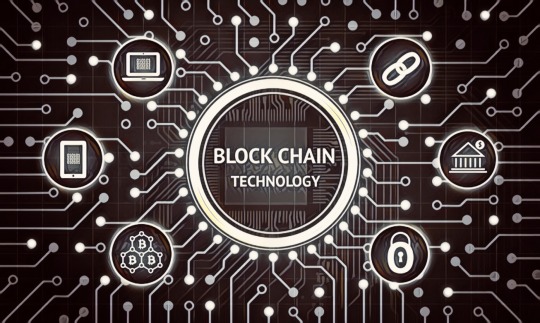
Oracle Hub is an extensive trading port
The Oracle oracle network opens the door to cross-chain interaction between executions, combining the efficient and data-independent interaction of COMOS with the underlying functional components of Polkadot to achieve scalability.
Specifically, Oracle can achieve data interaction with each independent blockchain network through the oracle network, and also adopts the Oracle Hub setting to connect technical resources, business requirements, existing blockchain functional components and practical business chains, so as to achieve scalability while meeting different business needs.
If you think of each blockchain network as a ^ city, then Oracle Hub is equivalent to a ^ four-way trade port, with perfect infrastructure, strong technical resources, efficient circulation interaction, can realize the needs of different blockchain cities, and has strong scalability.
Oracle Hub capabilities are specific to the blockchain world and can be cross-chain services such as chain registrars, automated market makers, Ethereum bridges, Bitcoin bridges, and close connections to the broader digital economy; It could also be shared security and fundraising for new blockchains, providing cross-chain accounts and devices for capital formation.

25 notes
·
View notes
Text
DeFi Use cases || Web3 O’clock
Decentralized finance DeFi use cases are revolutionizing the financial landscape on the Ethereum blockchain, offering diverse opportunities and reshaping the future of finance. From decentralized lending and borrowing platforms to yield farming, liquidity provision, and automated market makers, DeFi provides alternatives to traditional financial services. Smart contracts enable trustless and transparent transactions, while tokenization facilitates fractional ownership. NFT marketplaces within DeFi redefine digital asset ownership. These use cases collectively enhance accessibility, resilience, and transparency, reducing reliance on centralized entities. DeFi's transformative power lies in its ability to democratize finance, fostering a more inclusive and adaptable financial ecosystem.
4 notes
·
View notes
Text
"Next-Level Trading on TON: Experience the Power of STON.fi and Stonks Bot Together"
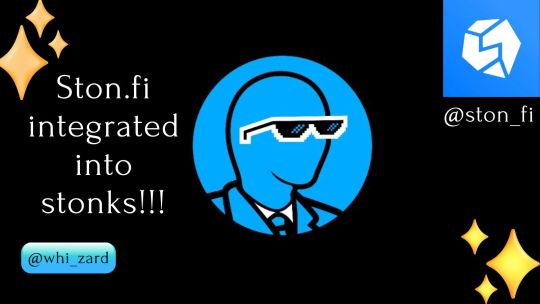
http://STON.fi a decentralized exchange (DEX) on the TON blockchain, has teamed up with the multifunctional Stonks trading bot.
With this update, traders now have seamless access to V2 pools, allowing them to automate transactions and deploy advanced trading strategies effortlessly.
@tonstonks operates as both a Telegram bot and a mini-app, making it highly accessible and user-friendly.
Stonks bot is one of the best trading bots on the TON Blockchain, packed with amazing features like:
I. Easy one-click buy
II. Automated bot (TO)
III. Stop-loss (SL) and Take-profit (TP) options
IV. Contract scanning
V. Earn from your referral link
VI. Low 1% fee on buys/sells
Stonks also offers the STONKS MEME LAUNCHPAD, successfully launching projects like @toncula_ton.
Don’t forget about the Sniper mode feature on Stonks trading bot, a great tool for snipers who want to quickly snipe Jettons before everyone else.
I recommend you explore the StonksBot feature here: https://t.me/stonks_sniper_bot?start=bc217a7bfdda0541df1e9df8bebd3f03.
Looking ahead, Stonks trading bot plans to go multi-chain, starting with Ethereum. This multi-chain feature aligns with STONfi’s future plans, including the integration of Cross-chain swaps and the Omniston protocol.
Back in August, Stonks pump revolutionized the way projects launched tokens on ston.fi, allowing users to create tokens without any technical expertise. This integration supports advanced trading for http://STON.fi V2 pools.
Why I'm Bullish On This:
The integration is powered by the http://STON.fi SDK, a robust developer tool that enables projects to tap into the http://STON.fi infrastructure.
For traders, this means:
✵ Explore a wide range of tokens in the ecosystem.
✵ Boost your trading with automated strategies.
✵ A simple entry point to DeFi for both beginners and pros.
For developers, it opens up a wealth of opportunities to build on TON, contributing to a more vibrant and accessible blockchain ecosystem.
With Stonks and http://STON.fi, the future of DeFi and trading on TON looks brighter than ever.
Ready to level up your trading?
Dive into the latest features of the Stonks trading bot and be confident knowing that the STONfi features will be there to assist you.
0 notes
Text
Injective Protocol: A Layer 1 Solution for Decentralized Finance (DeFi)
Injective Protocol is a Layer 1 blockchain that offers a unique approach to decentralized finance (DeFi) by addressing the limitations of traditional platforms. It combines fast transaction speeds, low costs, and blockchain interoperability, allowing users to trade assets across multiple blockchains without the high fees typical of networks like Ethereum.
Built on the Cosmos SDK, Injective supports decentralized exchanges (DEXs), derivatives, synthetic assets, and other DeFi products. Through the Inter-Blockchain Communication (IBC) protocol, it connects with networks like Ethereum and Binance Smart Chain, enabling users to seamlessly trade assets from different blockchains in one place.
Key Features of Injective Protocol:
Layer 1 Blockchain: Unlike Ethereum's Layer 2 solutions, Injective operates as a standalone Layer 1 blockchain, ensuring faster and more secure transactions.
Inter-Blockchain Communication (IBC): This protocol allows Injective to interact with other blockchains, facilitating cross-chain asset trading.
Decentralized Exchange (DEX): Injective uses an order book system, enabling more control over trades compared to traditional automated market makers (AMMs).
Low-Cost, High-Speed Transactions: Powered by the Cosmos Tendermint Proof-of-Stake system, it offers efficient and affordable trading experiences.
Derivatives and Futures Trading: Injective supports futures and derivatives, allowing users to trade cryptocurrencies and synthetic assets without brokers.
INJ Token: The INJ token is central to the Injective ecosystem. It powers fee payments, staking, and governance, and serves as collateral in derivative markets. The deflationary model, which involves burning a portion of transaction fees, could potentially increase the value of INJ as demand grows.
Challenges and Future: Despite its advancements, Injective faces challenges such as regulatory concerns, the need for greater liquidity, and competition from other DeFi platforms like Uniswap and dYdX. However, its ability to facilitate cross-chain trading and provide low-cost, high-speed transactions positions it as a key player in the DeFi space.
Injective’s growth, supported by partnerships and innovative features, continues to drive its adoption within the broader blockchain ecosystem.
0 notes
Text
유니스왑의 모든 것: 탈중앙화 거래소의 작동 원리와 투자 가치
유니스왑(UNI) 소개 유니스왑(Uniswap)은 최근 많은 주목을 받는 탈중앙화 거래소(Decentralized Exchange, DEX) 중 하나입니다. 이 프로토콜은 사용자가 중앙 기관 없이도 암호화폐를 거래할 수 있도록 지원합니다. 특히, 유니스왑은 자동화된 ��켓 메이커(Automated Market Maker, AMM) 모델을 사용하여 유동성을 제공하는 방식으로, DeFi(탈중앙화 금융)의 중추적인 역할을 하고 있습니다. 2018년 처음 출시된 유니스왑은, 특히 2020년 이후 DeFi의 폭발적인 성장과 함께 급속히 인기를 끌었습니다. 유니스왑의 매력은 자동화된 트레이딩 기능과 함께 누구나 쉽게 참여할 수 있는 거래 환경에 있습니다. 이러한 특성 덕분에 유니스왑은 사용자가 소유한 토큰을 유동성…
0 notes
Text
Decentralized Perpetual Exchange Software: The Key to Modern Trading Success

In the ever-evolving landscape of blockchain technology and cryptocurrency, decentralized finance (DeFi) continues to pave the way for groundbreaking innovations. Among these innovations, decentralized perpetual exchange software development has emerged as a transformative force, enabling traders to engage in perpetual futures trading without the need for intermediaries or centralized authorities. This article explores the concept, significance, and benefits of decentralized perpetual exchange platforms while highlighting how a robust decentralized perpetual exchange script can redefine trading experiences.
Understanding Decentralized Perpetual Exchanges
A decentralized perpetual exchange operates on blockchain technology, offering users the ability to trade perpetual futures contracts in a trustless, transparent, and permissionless environment. Unlike traditional futures contracts with an expiration date, perpetual contracts enable traders to hold positions indefinitely, offering flexibility and continuous trading opportunities.
The core advantage of decentralized perpetual exchanges lies in their ability to eliminate middlemen. By leveraging smart contracts and automated market makers (AMMs), these platforms ensure that transactions are executed efficiently and transparently, reducing costs and increasing security.
Why Decentralized Perpetual Exchange Software Development is Crucial
As the demand for DeFi solutions grows, businesses are seeking to develop cutting-edge platforms to meet user expectations. Decentralized perpetual exchange software development is at the forefront of this trend, empowering enterprises to launch secure, scalable, and user-friendly trading platforms.
Enhanced Security: Decentralized platforms are less vulnerable to hacks and breaches compared to centralized exchanges, as user funds are managed via non-custodial wallets.
Global Accessibility: With no centralized entity controlling access, traders from around the world can participate freely.
Transparency and Trust: Blockchain technology ensures that every transaction is visible on the public ledger, fostering trust among users.
Customizable Features: A high-quality decentralized perpetual exchange script can be tailored to include features like multi-asset support, intuitive UI/UX design, and advanced trading tools.
Plurance: A Leader in Perpetual Exchange Software Development
When it comes to developing reliable and innovative decentralized exchange platforms, Plurance is a prominent name in the industry. As a leading perpetual exchange software development company, Plurance specializes in creating customized solutions that cater to the unique needs of businesses venturing into the DeFi space.
Plurance's team of blockchain experts leverages the latest technologies to deliver high-performance platforms that prioritize security, scalability, and seamless user experiences. Whether you are looking to develop a brand-new platform or upgrade an existing one, Plurance ensures that your decentralized perpetual exchange software is built to thrive in the competitive DeFi ecosystem.
The Significance of a Decentralized Perpetual Exchange Script.
A decentralized perpetual exchange script serves as the foundation of any successful trading platform. It simplifies the development process, offering pre-built modules that can be customized to fit specific requirements. With a well-structured script, businesses can launch their platforms faster and reduce development costs while maintaining a high standard of quality and functionality.
In conclusion, the future of trading lies in decentralization, and perpetual exchanges are leading the charge. By partnering with a trusted development company like Plurance, businesses can unlock the potential of decentralized perpetual exchange software development, offering traders an unparalleled trading experience.
Take the leap into the future of DeFi and build your decentralized perpetual exchange today!
For more info:
Call/Whatsapp - +918807211181
Mail - sales@plurance. com
Telegram - Pluranceteck Skype - live:.cid.ff15f76b3b430ccc
Website - https://www.plurance.com/decentralized-perpetual-exchange-software-development
#blockchain#crypto#Decentralized Perpetual Exchange Software#Decentralized Perpetual Exchange Software Development#Decentralized Exchange Software Development Company#Decentralized Perpetual Exchange Script
0 notes
Text
How Can Liquidity Pools Be Managed in a Uniswap Clone?
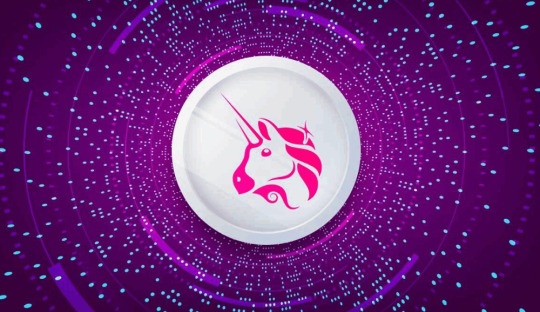
Introduction:
With the advancement of decentralized finance (DeFi), it has become a common way to create decentralized exchanges (DEXs) and enhance liquidity through Uniswap clone script development. However, within these clones, the ability to manage liquidity pools becomes very important if one expects liquidity, profit, and users. Below is a description of how to manage liquidity pools in an environment similar to that of Uniswap.
1. Understanding Liquidity Pools in a DEX Context
A DEX liquidity pool similar to the one seen in Uniswap is made up of different assets (tokens) deposited by the users also referred to as liquidity providers or LPs. These pools are used to support transactions by allowing such… Read More. In a Uniswap clone, the pools work the same where the LPs deposit pairs of tokens in the pool and earn transaction fees in return. In other words, for the DEX to operate effectively, the liquidity of the pool must be managed to avoid problems such as slippage and impermanent loss.
2. Incentivizing Liquidity Providers with Rewards
One of the significant elements in the management of liquidity pools is encouraging LPs to fund the pool in question. In the absence of adequate liquidity, users will face the issue of high slippage while making trades rendering them expensive and inefficient. Many protocols offer a portion of the trading fee to LPs as a common practice. Several Uniswap forks employ this in a more advanced way by developing incentive systems and even introducing extra token rewards. For instance, LPs could be awarded with governance tokens or tokens of the platform, thus encouraging them to stake their funds in the pools for longer time durations.
3. Dynamic Fee Adjustment
In order to draw in enough liquidity and sustain a reasonable volume of trading, clones of Uniswap can apply dynamic fees that vary according to market conditions. Fee alterations can assist in counterbalancing the expectations between LPs and traders. For example, in circumstances where there is a high level of fluctuations in markets, higher fees can be charged to mitigate losses from impermanent loss and thus, more LPs will be willing to offer liquidity. On the other hand, cost cuts when the markets are not volatile tend to promote more trading activity which is advantageous to the LPs as well as the appeal of the platform.
4. Mitigating Impermanent Loss
Impermanent loss happens when the worth of the tokens held in a specific liquidity pool dramatically diverges from its original worth. Wholesale and retail risks can be minimized by making use of strategies like offering impermanent loss insurance or liquefying only stable coins in the pools, which are less sensitive to price changes, in the case of Uniswap clones. Many DEXs also allow their LPs to manage their exposure to volatile assets by giving them an option of staking in only stable asset pairs pools.
5. Implementing Automated Market Maker (AMM) Algorithms
In the case of Uniswap clones, one important aspect of managing liquidity is the implementation of AMM algorithms that set the prices of tokens and the depth of liquidity. AMMs set the prices based on a specific predetermined equation, mainly the constant product equation (x multiplied by y equals k). To effectively utilize liquidity, a clone may vary the algorithm to fit the specific needs of the given market. For instance, a few clones have adopted a bonding curve model which helps in optimizing the allocation of liquidity thereby minimizing slippage for the traders and enhancing the experience of the LPs.
6. Regular Pool Rebalancing
The imbalance in the number of tokens contained within a certain pool may lead to unwarranted price changes thus it is important to maintain a proper mix of the tokens in that pool. The Rebalancing means introducing new assets to the pool or removing already existing assets from the pool so as to maintain constant token ratio, this is very important in ensuring that the pool does not experience volatility in the token values. The system administrators of the platform may carry out the rebalancing process physically or it may be carried out automatically according to preset conditions in the smart contracts that regulate the pools activity.
7. Offering Multiple Pool Types
Having a variety of liquidity pools will help attract more users. For instance, aside from the conventional pools, copies of Uniswap can also include pools designed for stable coins and exotic pair assets or even several assets in one. This will allow the users an option to select the pools which suit their risk appetite and investment aims, thereby improving liquidity of the platform and the usage by its users overall.
8. Enabling Community Governance
In Uniswap or any Uniswap clone, community governance becomes important in the use of liquidity pools. Most of the platforms perform the issuing of governance tokens, which enables LPs and other users to vote regarding important matters like fee changes, inclusion of new asset pairs and other matters concerning AMM. This helps to ensure that the liquidity strategy of the platform is in sync with the interests of the users, encouraging their loyalty and inducing them to stick around for the long haul.
Conclusion
To ensure efficient liquidity pool management in a forked Uniswap, the demand from liquidity providers has to be balanced with user friendly trading conditions. By offering rewards to Lps, changing the fee levels on the fly, addressing the issues of impermanent losses, and allowing governance by the community themselves, it is possible to create a healthy liquidity environment for DEXs.
These measures not only increase liquidity but also restore confidence in users and the platform’s functioning in general, making the clone more viable within the DeFi ecosystem.
0 notes
Text
The Role of Decentralized Exchanges (DEXs) in DeFi
Decentralized Finance or DeFi is, without a doubt, the future of financial services, offering a range of options that are accessible, transparent, and efficient. But what does this mean for the average user or business? How do decentralized exchanges (DEXs) fit into this transformative Coin Developer India picture?

In this blog, we will explore the essential role of DEXs in the DeFi ecosystem, highlighting their significance, benefits, challenges, and future potential.
Let’s start with how decentralized exchanges are not just an alternative to traditional finance but a crucial component driving innovation in the decentralized space.
What are Decentralized Exchanges (DEXs)?
Decentralized exchanges, or DEXs, are platforms that enable users to trade cryptocurrencies directly with one another without the need for intermediaries. This peer-to-peer trading model stands in stark contrast to centralized exchanges (CEXs), which rely on third parties to facilitate transactions and manage users’ assets.
Key Characteristics of DEXs
Peer-to-Peer Trading: DEXs allow users to trade directly, ensuring that no central authority controls the funds.
No Intermediaries: With no middlemen involved, users retain full ownership of their assets at all times.
Smart Contracts: DEXs utilize smart contracts to automate trades and ensure trustless transactions.
This shift from traditional centralized systems to DEXs is significant, as it provides greater autonomy and security for users, reshaping the way we think about trading and investing.
How DEXs Power DeFi
Decentralized exchanges serve as the backbone of the DeFi ecosystem, enabling a variety of financial services that were previously only available through centralized entities.
Facilitating Permissionless, Trustless Trading
With DEXs, users can trade assets without the need for approval from a central authority, making the trading process more inclusive and accessible. This permissionless environment fosters innovation and allows anyone with an internet connection to participate in the financial market.
Liquidity Pools and Automated Market Makers (AMMs)
DEXs leverage liquidity pools and Automated Market Makers to facilitate trading without traditional order books. This innovative approach allows users to provide liquidity and earn rewards, further enhancing the DeFi ecosystem.
Popular DEXs like Uniswap, SushiSwap, and PancakeSwap exemplify how these platforms enable users to trade tokens seamlessly while contributing to the overall liquidity in the market.
Benefits of DEXs in DeFi
The advantages of decentralized exchanges extend beyond just user autonomy; they fundamentally change the way financial systems operate.
Decentralization and Control
With DEXs, users maintain control over their assets and private keys, reducing reliance on third-party custodians. This decentralized approach enhances security and trust in the trading process.
Security
Because DEXs are built on blockchain technology, they are less susceptible to hacks and breaches compared to centralized exchanges. Users interact directly with smart contracts, minimizing risks associated with storing assets on a central server.
Transparency
All transactions on DEXs are recorded on public blockchains, allowing for complete transparency. Users can audit smart contracts and verify the legitimacy of trades.
Global Accessibility
DEXs break down geographical and identity barriers, allowing users from all over the world to access financial services without discrimination.
Lower Fees
By eliminating intermediaries, DEXs often provide lower transaction and trading fees compared to traditional exchanges, making them an attractive option for traders and investors alike.
Challenges and Risks of DEXs in DeFi
Despite their advantages, DEXs face several challenges that need addressing for broader adoption.
Liquidity Issues
While liquidity pools are essential for DEX functionality, their reliance on liquidity providers can lead to liquidity issues, especially for less popular tokens.
User Experience
The complexity of using DEXs can deter new users. Understanding slippage, gas fees, and trading mechanics requires a learning curve that may be intimidating for beginners.
Regulatory Uncertainty
As DEXs operate outside traditional financial systems, they face potential regulatory challenges that could impact their functionality and user base in the future.
Smart Contract Risks
While smart contracts enhance security, they are not immune to bugs or exploits. Users must be cautious and conduct thorough research before engaging with any DEX.
Future of DEXs in DeFi
Looking ahead, several trends are emerging that could shape the future of DEXs and their role in DeFi.
Emerging Trends in DEX Development
Innovations such as Layer 2 solutions and cross-chain interoperability are being developed to improve scalability and user experience on DEXs.
Governance Tokens
Governance tokens empower users to have a say in the development and operation of DEX protocols, enhancing community engagement and decentralization.
Hybrid Exchanges
The future may also see the rise of hybrid exchanges that combine the best features of both centralized and decentralized platforms, offering users flexibility and choice.
Wrapping Up!
Decentralized exchanges are pivotal in the ongoing evolution of DeFi, providing a framework that empowers users and enhances financial inclusivity. As the DeFi ecosystem continues to grow, DEXs will play a crucial role in driving innovation and shaping the future of finance.
If you're considering exploring DEX development for your business, This is the time to connect with a reputable decentralized cryptocurrency exchanges development company like Coin Developer India. Let’s shape the future of finance together!
#coindeveloperindia#decentralized cryptocurrency Exchange Development Company#decentralized Exchange Development Company#cryptocurrency Development Company
0 notes
Text
Uniswap Clone Script Key Features List
In this blog get a info about uniswap clone script key features list, Read it now.

What Are the Key Features of a Uniswap Clone Script?
Uniswap’s growing demand for decentralized exchanges (DEXs) continues to soar, many firms are looking for avenues through which they can solve problems similar to ones addressed by Uniswap. The Uniswap clone script is a type of software application that reproduces the constitution of the decentralized exchange that Uniswap has. In this paper, we will look at the main aspects that make a Uniswap clone script development a viable alternative for any establishment that wishes to its own decentralized manner of trading.
1. Automated Market Maker (AMM)
Something where Uniswap and indeed any clone script based on it shines is the Automated Market Maker (AMM) mechanism. AMM is a means of providing the market which circumvents the order book model that is prevalent with centralized exchanges, thereby allowing liquidity pool trades to take place based on mathematical calculations instead of finding people willing to buy and sell.
The AMM protocol is facilitated by liquidity pools in which users provide equal sums of two tokens. When a user seeks to swap some tokens, the AMM manipulates the ratios in the pool so that the tokens may be traded without needing any other person to do it. Such a mechanism helps in providing liquidity all the time, which is an important aspect of the decentralized exchange.
2. Liquidity Pools
The Uniswap model based decentralized Exchange (DEX) cannot work without liquidity pools. A liquidity pool is a type of smart contract where two or more tokens are reserved and users are allowed to trade against such reserves. Users depositing their tokens into this pool are called liquidity providers and they earn a portion of the fees generated from transactions carried out by other users in the given pool.
Liquidity pools eliminate the issue of token swaps causing illiquidity as they ensure there is always liquidity in the system thus doing away with the requirement of centralized bodies to bring buyers and sellers together. Furthermore, earnings for liquidity providers incentivize the community, and therefore the protocol, to maintain liquidity.
3. Permissionless Trading
The permissionless feature of a Uniswap clone script is probably one of the most appealing characteristics of the script. Centralized exchanges have users going through Know Your Customer (KYC) and account creation processes before they can begin trading. These exchanges enable users who possess an Ethereum compatible wallet such as Metamask, to start swapping tokens immediately.
The concept of no restrictions in service provision coheres with the spirit of decentralization and confidentiality, which is why, in particular, users who do not trust such services because of the risk of data leaks appreciate it.
4. ERC20 Token Swapping
Uniswap and similar platforms have been developed with the primary aim of enabling traders to exchange different ERC20 tokens. These tokens are created using the Ethereum-based ERC20 token standard, thus any token created using that standard can be traded on a Uniswap clone without any restrictions. This feature is very useful as there are thousands of decentralized finance (DeFi) and even thousands of decentralized applications (dApps) that have developed ERC20 compatible tokens.
Also, it is possible to modify the majority of the Uniswap clone scripts in order to include other token standards such as BEP20 (Binance Smart Chain) or Wrapped Tokens, thus widening the range of tokens available for trading by the users.
5. Decentralized Governance
One of the important elements in the success of every DEX is decentralized governance. In a Uniswap clone script, the users’ governance is possible through staking of the native token which is mostly a governance token. This helps them take part in the crucial platform activities such as changing the fee system, adding new tokens to the platform, or updating the system.
Decentralized governance makes sure that there is no central authority overseeing the operations of the platform hence the power is given to the community as well enabling the decision making to be more democratic. This corresponds to the fundamental principles behind blockchain technology, which is meeting the need for accountability and security while enhancing community initiatives.
6. Customizable Smart Contracts
A key benefit derived from integrating a Uniswap clone script is flexibility. The basic principle of Uniswap is retained, however, organizations can change the platform to suit their requirements. They may revise the transaction costs, modify the compensation models for the liquidity providers, or even include entirely different functionality than what is available in the standard Uniswap protocol.
Moreover, given that they are implemented through smart contracts, all trade, provision of liquidity and governance activities are automated and executed in an open manner. There is thus no room for central governing authorities in such platforms thereby making such platforms more trustworthy and dependable.
7. Yield Farming and Staking
Most Uniswap clone scripts are prebuilt with farming and staking capabilities. In yield farming, users lock their assets in a liquidity pool and expect high returns either in interest rates or in that pool’s tokens. This encourages users to populate the liquidity of the platform hence its overall operability is improved.
In opposition staking permits participants to freeze their tokens for a set duration and enjoy a share of block rewards. Staking is also integrated with governance especially when the stakeholders will earn some income from their tokens for being able to vote in various propositions.
8. Trustless Transactions
The idea of trustless transactions is fundamental in any decentralized platform and a Uniswap clone script guarantees that all trades are executed on chain through smart contracts. Hence there is no need for a third party to administer the trade or even oversee the trades. The structural design of the system is such that it curtails any associated risks such as hacking or fraud since there is no moment that the exchange holds any funds on behalf of the users. Non-members’ funds are held in wallets until there is an active trade executed.
9. No Middlemen or Custodians
A uniswap script allows users to trade assets without holding their funds in one place. Therefore, there are no assets held by any third parties. Financial transactions are conducted only between the pair of users. So even in the low market cap assets or exchanges, users do not risk losing their funds due to hacks. With DeFi, users can swap any tokens using the liquidity pools existing on the DEX, without managers of any sort.
10. Multi-Wallet Integration
Multi Wallet integration is another useful feature found in most Uniswap clone scripts. Most of the platforms support different kinds of wallets that are ERC-20 tokens enabled, including MetaMask, Trust Wallet, Coinbase Wallet which allows the user to easily connect their wallets and begin trading. This is useful, because it markets to different types of persons and promotes its usage, thus allowing the trader to interact with the platform in any way they find appealing.
Conclusion
A Uniswap clone script contains all the necessary components required for developing a strong decentralized exchange from automated market makers, liquidity pools, permissionless trading, to decentralized governance. The adaptability and customizable aspect of the Uniswap clone script makes it a great option for companies that want to penetrate the dynamic DeFi industry but do not want to develop a DEX from a zero stage. Using Uniswap’s proven mechanics, clone scripts create a safe and trustless form of trading, making them an essential component of today’s decentralized-finance systems.
0 notes